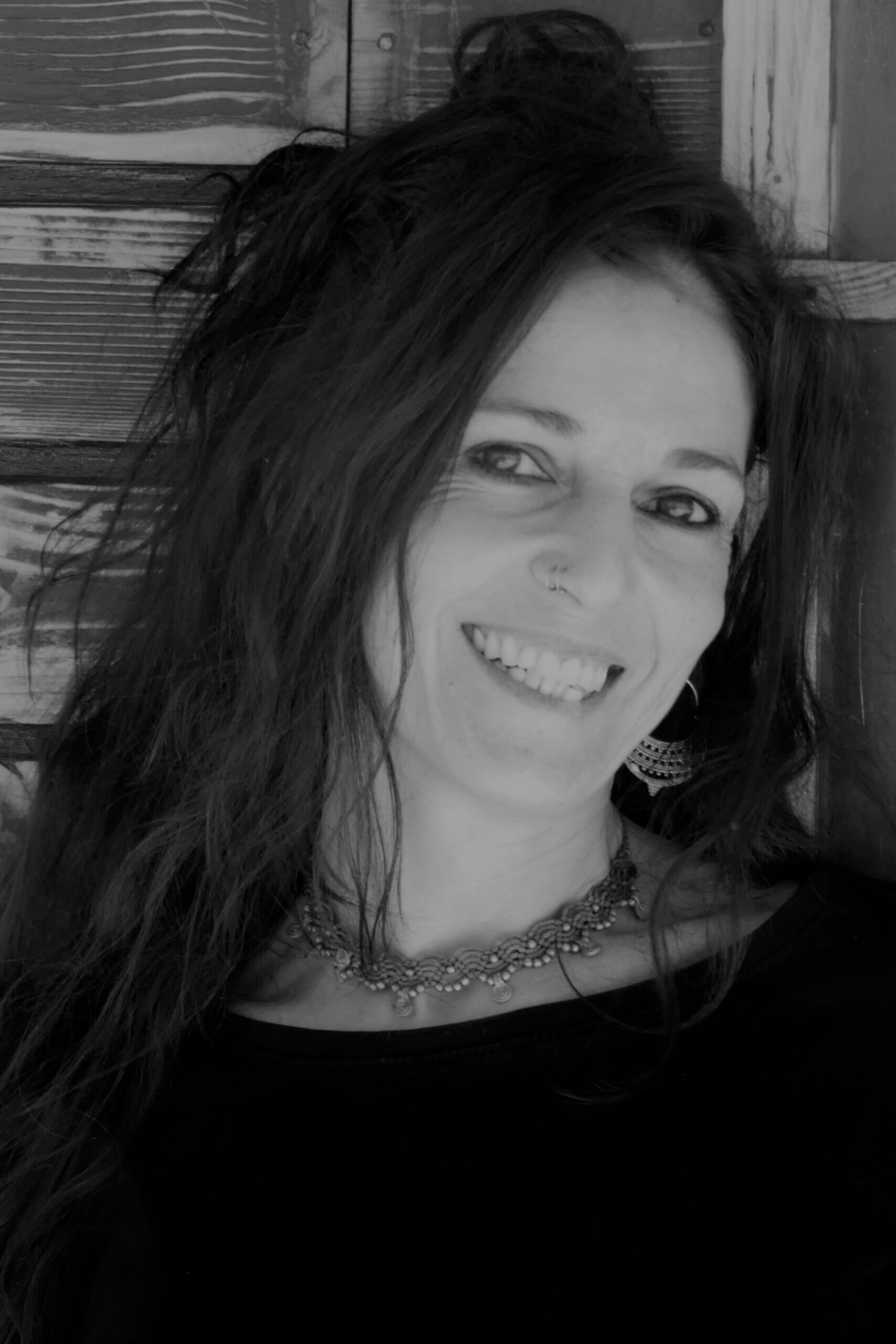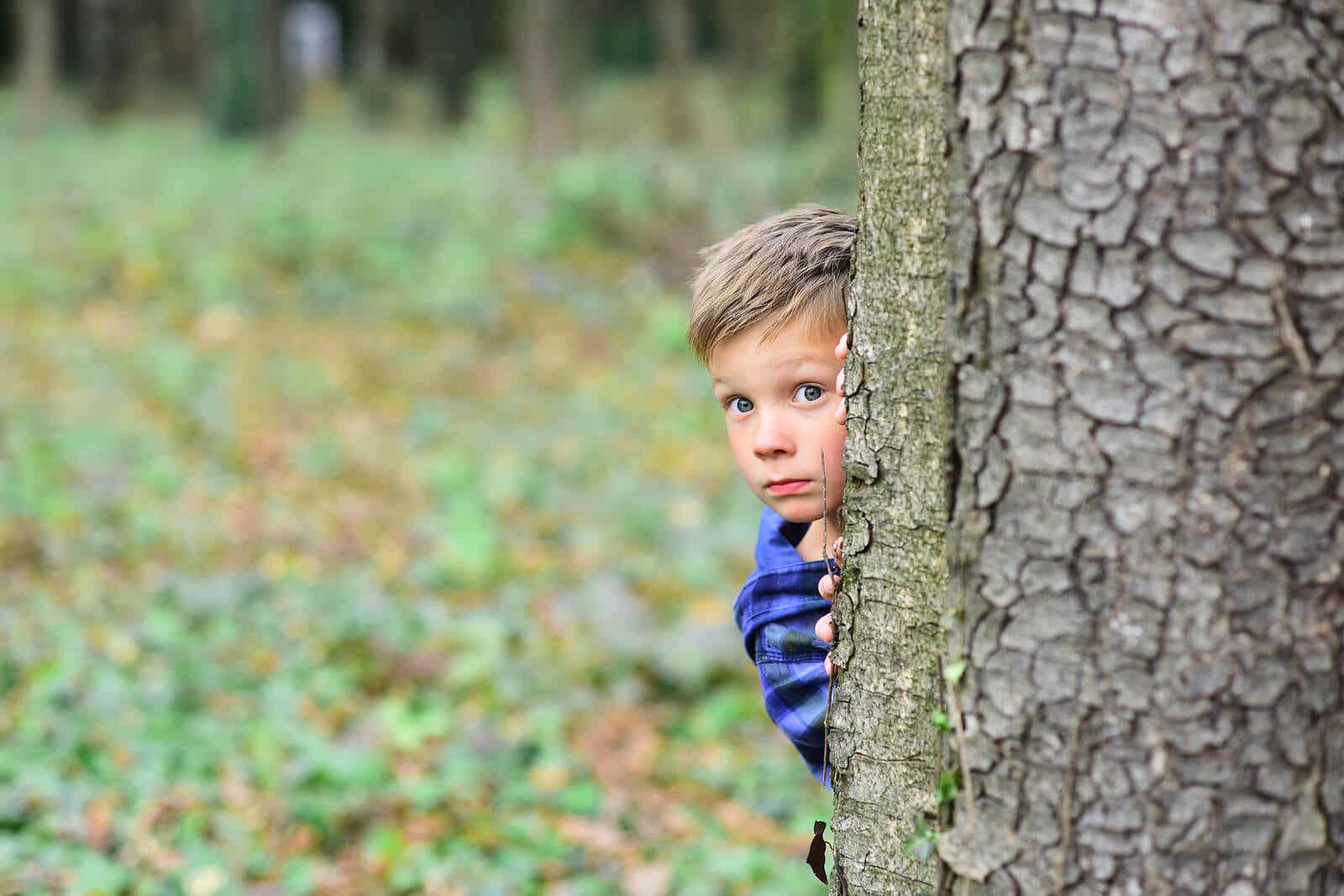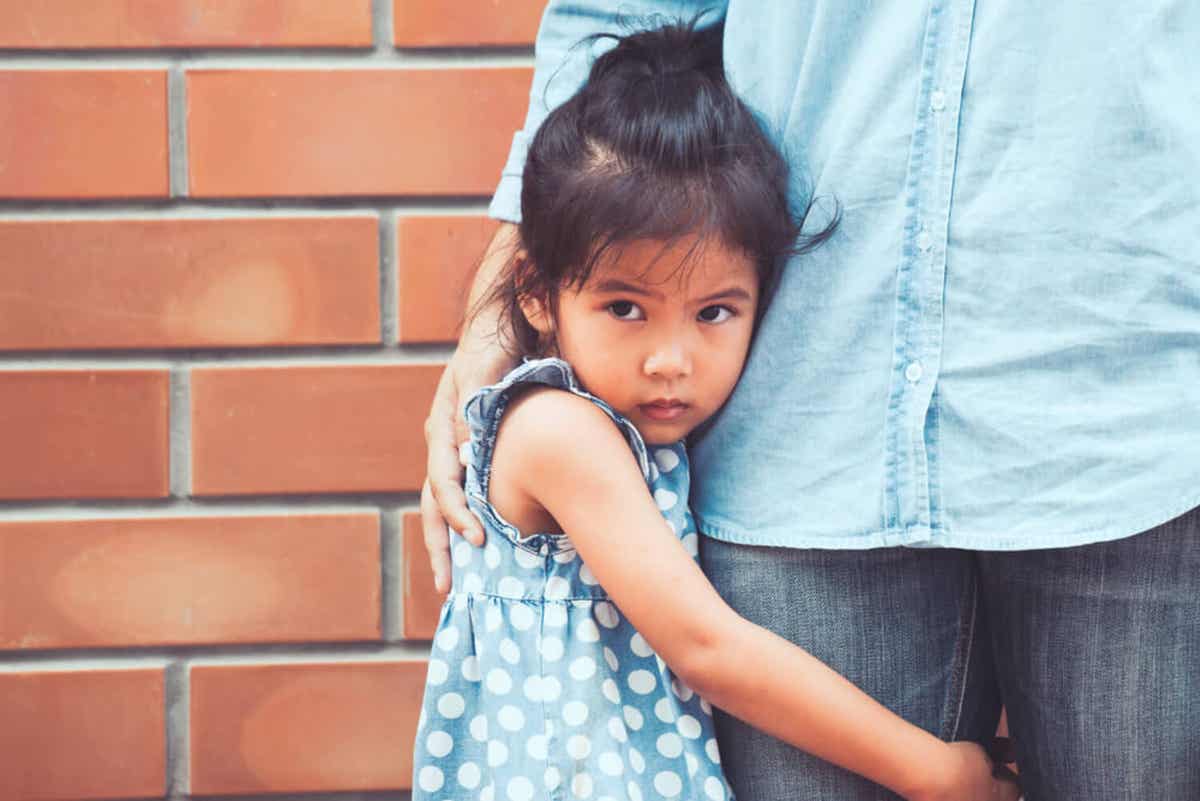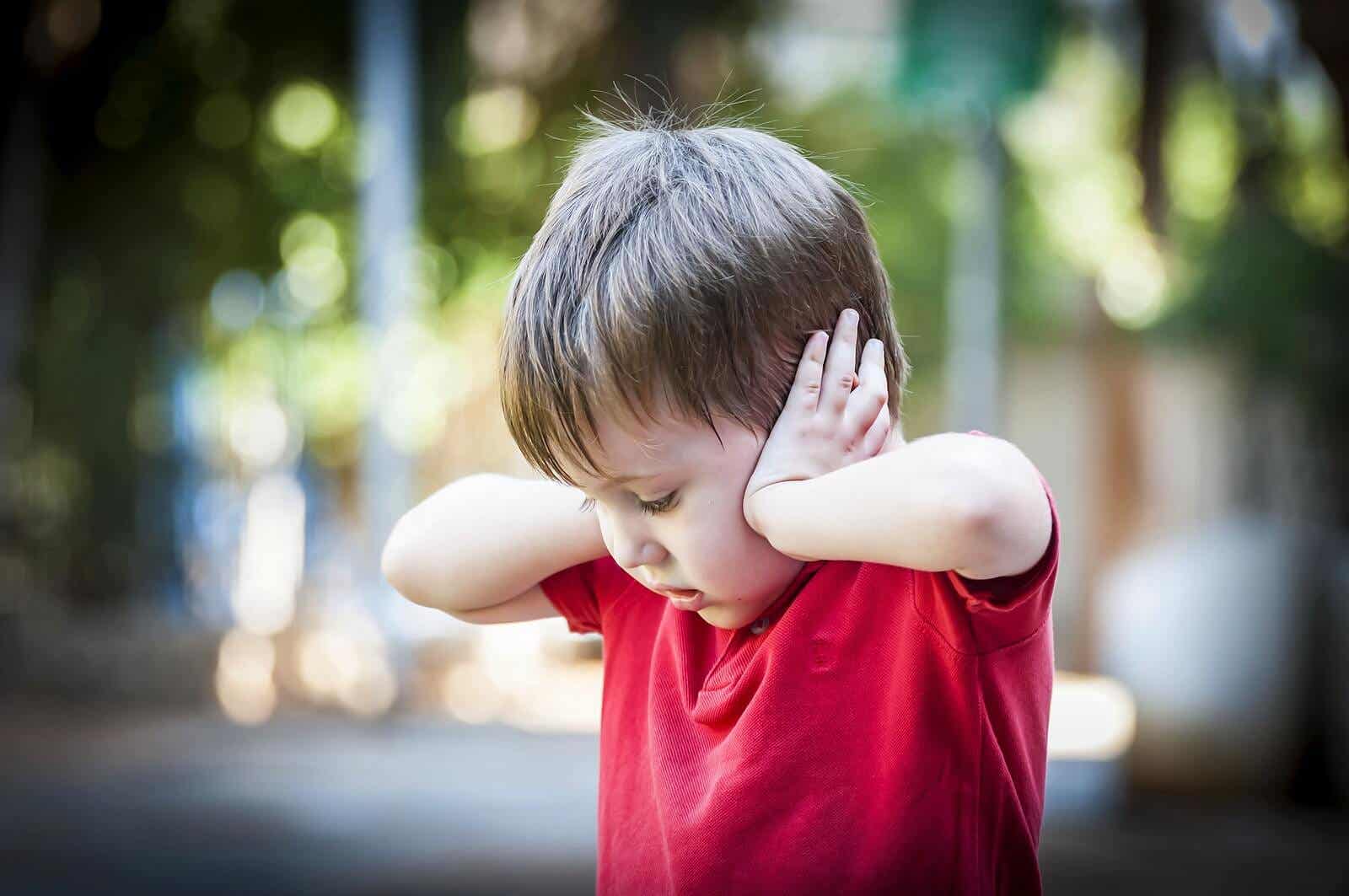Developmental Fears in Childhood


Written and verified by the pedagogue Marta Crespo Garcia
It’s normal for children to experience fears during childhood. Developmental fears in childhood are transitory and are of no great importance. They usually disappear on their own and rarely become a problem. Below, we’ll discuss the developmental fears that arise at each stage of childhood and some guidelines to keep in mind when helping children to cope with them.
Developmental fears in childhood

What is fear?
Fear’s one of the six basic human emotions. Fear warns us about a real or imaginary danger and originates defensive and protective responses. In fact, it acts as a defense mechanism.
We have all, at some time in our lives, felt fear. According to the authors Sassaroli and Lorenzini, if a species weren’t capable of experiencing fear, it’d quickly become extinct because it wouldn’t be able to become aware of dangers in time, nor react to them. Thus, fear’s considered an adaptive and protective phenomenon.
Therefore, it’s normal for children to experience fears during their development. These developmental fears are of little importance, usually disappear on their own, and rarely become a problem.
However, in some extreme cases, fears can affect a child’s development. They can become a problem, even a disorder or phobia, which will have repercussions on their emotional development.
Aspects that affect the developmental onset of fears
Some characteristics of child development and of the context where the child develops contribute to explain the appearance of some developmental fears. Their growth, their learning, the evolution of the nervous system, and the development of the perceptive capacity, help the child have a better perception of dangers and, therefore, of fear.
Other aspects that affect the evolutionary appearance of fears are the following:
- The symbolic and representational capacity. The child remembers unpleasant experiences and is able to foresee that they can be repeated.
- Information and perception about the surrounding reality and adult warnings.
Developmental fears
Childhood fears appear, on many occasions, without any apparent reason. They develop according to a predictable evolutionary sequence and eventually disappear with the passing of time.
The first childhood fears are instinctive and innate. They’re present at birth. For example, fear of loud noises, fear of falling, fear of the dark, fear of strangers…these fears are biologically determined, although they’re not immutable. Some of these innate fears will persist into adulthood.
As the child grows and develops, other fears will appear. Many of these fears remain instinctive, while others depend on the individual and social learning and experiences.
Stages of developmental fears in childhood
We’ll now discuss the different stages of developmental fears in children.

From naught to twelve months
A child, as soon as it’s born, already experiences fear reactions to concrete and delimited stimuli. Fear responses appear to sudden and intense noises, to sudden loss of sustenance, and to any very intense stimulation. These responses are universal, unconditioned, and therefore, phylogenetic.
From the age of six months, the child feels fear when separated from parents or attachment figures. Fear of strangers also appears, another reaction considered by many authors to be universal and innate.
From one to two years
The previous fears are maintained. In addition, from the first year, the objects and situations that produce fear in children increase. The one-year-old child tends to react with fear to intense and unknown stimuli.
From two to four years
At two or three years of age, animals appear as objects of fear for some infants. Also, they begin to be afraid of the dark, storms, and doctors. They continue to be afraid of separation from their parents and of the dark.
From four to six years old
Around the age of four or five, the most frequent fears refer to fantastic and imaginary characters, nightmares, or being left alone. Likewise, they continue to maintain the fears of the previous stage.
From the age of four or five, the influence of cultural and educational factors is decisive in the appearance and development of children’s fears. Children, through learning (observational, conditioning, etc.) and the emotional contagion of their parents, educators, and other adults, adopt, to a great extent, their fears.
From six to eight years old
Around the age of seven or eight, more fears become radicalized. The intellectual development of the child, together with the experiences they have, produces new fears. Fear of social disapproval, ridicule, or death appears; not so much their own death, but that of their parents.
From eight to ten years old
In this period, children are still afraid of ridicule. They begin to fear exams and failure. They’re also afraid of quarrels and serious conflicts between parents.
From ten years of age
From the age of nine or ten, and from the age of fourteen onward, the fears that they had until the age of six are significantly reduced. However, those of the previous stage continue and new ones appear
The new fears are related to the fear of criticism and rejection by their peers. Likewise, they’re afraid of school failure, catastrophes, accidents, illness, death, etc.

In this process, the educational environment in which the child develops is fundamental. The educational guidelines used in the presence of fears will accelerate their overcoming of fears or, on the contrary, will be a hindrance.
Some guidelines to take into account when dealing with children’s fears
Family and educators, together with educational guidelines, play an essential role in the remission of childhood fears. The following are some of these guidelines:
- Offer a general atmosphere of emotional security.
- Maintain a calm and firm atmosphere.
- Encourage the child’s independence.
- Avoid using fear as a disciplinary factor.
- Don’t coerce the child to face the feared object.
- Try not to reinforce when the child is afraid.
- Don’t dramatize the fearful situation.
- Choose stories starring children who face their fears and overcome them.
Regarding developmental fears in childhood: take into account
Regarding fears, it should be noted that, from the age of two to fourteen, practically all children experience some specific and concrete fear. These fears gradually disappear on their own and are replaced by new ones. They rarely become a problem.
However, the fears that are considered “normal” aren’t the same in all children of the same age, neither in quantity nor in intensity. In addition to the child’s developmental stage, variables such as individual differences (personality), cultural differences, race, gender, among others, are involved in the appearance of fears.
It’s normal for children to experience fears during childhood. Developmental fears in childhood are transitory and are of no great importance. They usually disappear on their own and rarely become a problem. Below, we’ll discuss the developmental fears that arise at each stage of childhood and some guidelines to keep in mind when helping children to cope with them.
Developmental fears in childhood

What is fear?
Fear’s one of the six basic human emotions. Fear warns us about a real or imaginary danger and originates defensive and protective responses. In fact, it acts as a defense mechanism.
We have all, at some time in our lives, felt fear. According to the authors Sassaroli and Lorenzini, if a species weren’t capable of experiencing fear, it’d quickly become extinct because it wouldn’t be able to become aware of dangers in time, nor react to them. Thus, fear’s considered an adaptive and protective phenomenon.
Therefore, it’s normal for children to experience fears during their development. These developmental fears are of little importance, usually disappear on their own, and rarely become a problem.
However, in some extreme cases, fears can affect a child’s development. They can become a problem, even a disorder or phobia, which will have repercussions on their emotional development.
Aspects that affect the developmental onset of fears
Some characteristics of child development and of the context where the child develops contribute to explain the appearance of some developmental fears. Their growth, their learning, the evolution of the nervous system, and the development of the perceptive capacity, help the child have a better perception of dangers and, therefore, of fear.
Other aspects that affect the evolutionary appearance of fears are the following:
- The symbolic and representational capacity. The child remembers unpleasant experiences and is able to foresee that they can be repeated.
- Information and perception about the surrounding reality and adult warnings.
Developmental fears
Childhood fears appear, on many occasions, without any apparent reason. They develop according to a predictable evolutionary sequence and eventually disappear with the passing of time.
The first childhood fears are instinctive and innate. They’re present at birth. For example, fear of loud noises, fear of falling, fear of the dark, fear of strangers…these fears are biologically determined, although they’re not immutable. Some of these innate fears will persist into adulthood.
As the child grows and develops, other fears will appear. Many of these fears remain instinctive, while others depend on the individual and social learning and experiences.
Stages of developmental fears in childhood
We’ll now discuss the different stages of developmental fears in children.

From naught to twelve months
A child, as soon as it’s born, already experiences fear reactions to concrete and delimited stimuli. Fear responses appear to sudden and intense noises, to sudden loss of sustenance, and to any very intense stimulation. These responses are universal, unconditioned, and therefore, phylogenetic.
From the age of six months, the child feels fear when separated from parents or attachment figures. Fear of strangers also appears, another reaction considered by many authors to be universal and innate.
From one to two years
The previous fears are maintained. In addition, from the first year, the objects and situations that produce fear in children increase. The one-year-old child tends to react with fear to intense and unknown stimuli.
From two to four years
At two or three years of age, animals appear as objects of fear for some infants. Also, they begin to be afraid of the dark, storms, and doctors. They continue to be afraid of separation from their parents and of the dark.
From four to six years old
Around the age of four or five, the most frequent fears refer to fantastic and imaginary characters, nightmares, or being left alone. Likewise, they continue to maintain the fears of the previous stage.
From the age of four or five, the influence of cultural and educational factors is decisive in the appearance and development of children’s fears. Children, through learning (observational, conditioning, etc.) and the emotional contagion of their parents, educators, and other adults, adopt, to a great extent, their fears.
From six to eight years old
Around the age of seven or eight, more fears become radicalized. The intellectual development of the child, together with the experiences they have, produces new fears. Fear of social disapproval, ridicule, or death appears; not so much their own death, but that of their parents.
From eight to ten years old
In this period, children are still afraid of ridicule. They begin to fear exams and failure. They’re also afraid of quarrels and serious conflicts between parents.
From ten years of age
From the age of nine or ten, and from the age of fourteen onward, the fears that they had until the age of six are significantly reduced. However, those of the previous stage continue and new ones appear
The new fears are related to the fear of criticism and rejection by their peers. Likewise, they’re afraid of school failure, catastrophes, accidents, illness, death, etc.

In this process, the educational environment in which the child develops is fundamental. The educational guidelines used in the presence of fears will accelerate their overcoming of fears or, on the contrary, will be a hindrance.
Some guidelines to take into account when dealing with children’s fears
Family and educators, together with educational guidelines, play an essential role in the remission of childhood fears. The following are some of these guidelines:
- Offer a general atmosphere of emotional security.
- Maintain a calm and firm atmosphere.
- Encourage the child’s independence.
- Avoid using fear as a disciplinary factor.
- Don’t coerce the child to face the feared object.
- Try not to reinforce when the child is afraid.
- Don’t dramatize the fearful situation.
- Choose stories starring children who face their fears and overcome them.
Regarding developmental fears in childhood: take into account
Regarding fears, it should be noted that, from the age of two to fourteen, practically all children experience some specific and concrete fear. These fears gradually disappear on their own and are replaced by new ones. They rarely become a problem.
However, the fears that are considered “normal” aren’t the same in all children of the same age, neither in quantity nor in intensity. In addition to the child’s developmental stage, variables such as individual differences (personality), cultural differences, race, gender, among others, are involved in the appearance of fears.
All cited sources were thoroughly reviewed by our team to ensure their quality, reliability, currency, and validity. The bibliography of this article was considered reliable and of academic or scientific accuracy.
- SASSAROLI, S. y LORENZINI, R. (2000): Miedos y fobias: causas, características y
terapias. Barcelona: Paidós. - Giner González, C. EDUCAR LAS EMOCIONES EN LA INFANCIA. EVALUACIÓN DEL PROYECTO DE INTERVENCIÓN: “¡UY, QUÉ MIEDO!” GRADO DE MAESTRO/A DE EDUCACIÓN INFANTIL. Universidad e Valladolid. Junio 2013. Disponible en: https://uvadoc.uva.es/bitstream/handle/10324/4738/TFG-L304.pdf?sequence=1 [Acceso julio 2021]
This text is provided for informational purposes only and does not replace consultation with a professional. If in doubt, consult your specialist.








